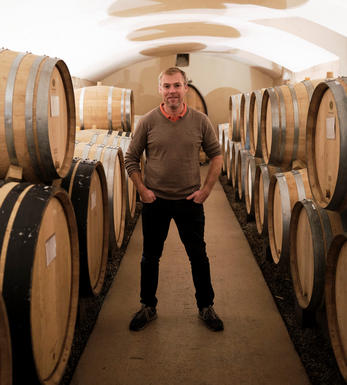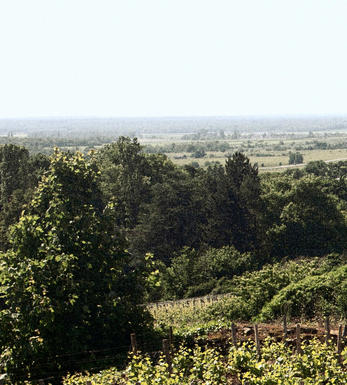
2016 Pommard, Rugiens-Hauts, 1er Cru, Benjamin Leroux, Burgundy

Critics reviews
Neal Martin - 29/12/2017
About this WINE

Benjamin Leroux
Having created a name for himself as régisseur (general manager) of Domaine du Comte Armand in Pommard, Benjamin Leroux established, with English backing, a small négociant business based in Beaune since 2007. The range is confined to the Côte d’Or, from Chassagne-Montrachet to Gevrey-Chambertin, with the intention of developing farming contracts or indeed purchasing vineyards in the future.
The possibilities are very exciting for this exceptionally talented vigneron. Benjamin is a master at delivering purity of fruit alongside a seamless texture in his wines which have only the subtlest influence of oak. One of Benjamin’s favourite locations for white wine vineyards is the border between Auxey-Duresses and Meursault, which is where Les Vireuils can be found. Here the natural weight of Meursault is enhanced by the fresher minerality typical of the side valley of Auxey-Duresses.
Jasper Morris MW, Burgundy Wine Director and author of the award-winning Inside Burgundy comprehensive handbook.
Discover the story behind our Own Selection Bourgogne Côte d’Or Pinot Noir, made for us by Benjamin. Read more

Pommard
The most powerful red wines of the Côte de Beaune emanate from Pommard, where complex soils with a high proportion of iron-rich clay produce deep-coloured, relatively tannic wines. A Pommard that is ready to drink in its first few years is probably not going to be a great example of the appellation.
Two vineyards stand out: the lower part of Les Rugiens, which has been mooted for promotion to Grand Cru status, and the five-hectare, walled Clos des Epéneaux, monopoly of Comte Armand.- 212 hectares of village Pommard
- 125 hectares of Premier Cru vineyards (28 in all). The finest vineyards include Les Rugiens, Les Epénots (including Clos des Epéneaux) and Pézérolles
- Recommended producers: Comte Armand, de Montille, de Courcel, J-M Boillot

Pinot Noir
Pinot Noir is probably the most frustrating, and at times infuriating, wine grape in the world. However when it is successful, it can produce some of the most sublime wines known to man. This thin-skinned grape which grows in small, tight bunches performs well on well-drained, deepish limestone based subsoils as are found on Burgundy's Côte d'Or.
Pinot Noir is more susceptible than other varieties to over cropping - concentration and varietal character disappear rapidly if yields are excessive and yields as little as 25hl/ha are the norm for some climats of the Côte d`Or.
Because of the thinness of the skins, Pinot Noir wines are lighter in colour, body and tannins. However the best wines have grip, complexity and an intensity of fruit seldom found in wine from other grapes. Young Pinot Noir can smell almost sweet, redolent with freshly crushed raspberries, cherries and redcurrants. When mature, the best wines develop a sensuous, silky mouth feel with the fruit flavours deepening and gamey "sous-bois" nuances emerging.
The best examples are still found in Burgundy, although Pinot Noir`s key role in Champagne should not be forgotten. It is grown throughout the world with notable success in the Carneros and Russian River Valley districts of California, and the Martinborough and Central Otago regions of New Zealand.


Buying options
Add to wishlist
Description
Having made Clos des Epeneaux at Comte Armand, Ben had always harboured an ambition to make Pommard’s other great wine, so was delighted to take the opportunity; this comes from a plot in the lower part of Les Rugiens-Hauts. There is a real concentration of fruit here, Grand Cru weight and a wonderfully elegant tannic structure which underlines the class of this site. Drink 2023-2035.
Adam Bruntlett, Burgundy Buyer
Having created a name for himself as régisseur (general manager) of Comte Armand in Pommard from 1999 until 2013, Benjamin Leroux established a small négociant business based in Beaune in 2007. The emphasis is on Côte de Beaune whites and Côte de Nuits reds. The company also owns a small holding of Bâtard-Montrachet and since 2014 some vineyards in Meursault. In a short space of time Benjamin Leroux’s wines have built an impressive reputation. Ben is a big fan of his 2016s, praising the sizzling tension of the whites and the beautiful quality of the Pinot fruit, which allowed him to use more whole bunches than in 2015. In early stages of élevage he drew comparisons to 2010, and feels these are wines which will surprise people and gain complexity with time. Thanks to his strong relationships with suppliers, Ben was able to maintain production at around 2015 levels despite the frost, although in general he has less Village and Grand Cru wine and more at the Premier Cru level. For reasons of space, the limited volumes of Grands Crus have not been included in this catalogue. Since the 2014 vintage, all white wines are bottled under screwcap.
wine at a glance
Delivery and quality guarantee